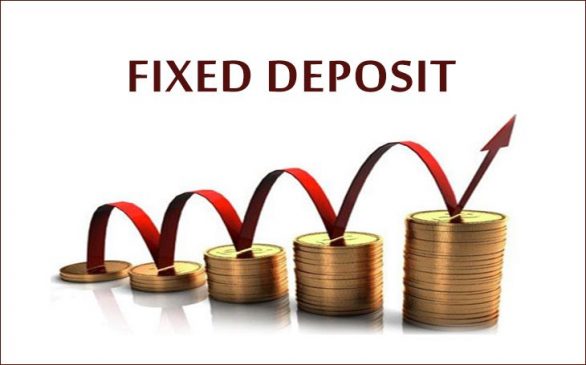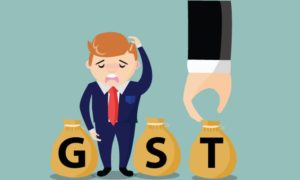Fixed Deposits (FDs) can be a great choice for those seeking a stable source of income. This investment option could be of great help during periods when a regular cash flow is needed. By opting for non-cumulative FDs, you could earn a monthly income. This may help you manage your certain expenses without eroding the principal amount.
Here’s how you can receive regular interest using the FD with monthly payout option:
Also Read:- Demat Accounts: 12 key benefits of using auto pay facility for trade settlements
How Do Non-cumulative Fixed Deposits Generate Monthly Income?
Non-cumulative fixed deposits offer interest payouts at regular intervals of your choice. Instead of compounding, the interest earned is regularly credited to your account. Here’s how they work:
Interest Payout Options: You can choose the frequency of your payouts. Options typically include monthly, quarterly, semi-annual, or annual payouts.
Determining the Payout: The payout depends on the FD’s interest rate and deposit amount. For example, if you invest ₹10 Lakhs at an interest rate of 7% p.a., the monthly interest income would be about ₹5,833.
Direct Credit: The interest is usually credited directly to your linked bank account. This ensures you receive your funds without any hassle.
Also Read– 7 Years Of GST Today: GST Exemption For Start-Ups And Small Businesses
Advantages of Non-cumulative Fixed Deposits
Here are some benefits you can enjoy by opting for a non-cumulative Fd with monthly payout:
Regular Income Stream: The primary advantage is the regular income stream. It is predictable, and thus, its impact on your budget is easier to assess. This FD is especially useful for retirees. It enables them to create a consistent cash flow to cover their living expenses and more.
Flexible Cash Flow: You can align your financial needs with the interest payout. This facilitates better cash flow management without impacting the principal investment.
No Impact on Principal: The principal amount remains intact throughout the tenor. Only the interest earned is paid out, preserving your capital for the duration of the FD.
Considerations for Non-cumulative Fixed Deposits
Here are some things to keep in mind prior to opting for a non-cumulative fixed deposit:
Lower Yield: The yield on non-cumulative FDs might be lower than that of cumulative FDs. This is because the interest is not reinvested and compounded.
Tax Liability: The interest earned is subject to Tax Deducted at Source (TDS) if it exceeds ₹40,000 per financial year. This limit has been extended up to ₹50,000 for senior citizens. This could reduce the net income received unless appropriate tax-saving measures are taken.
Premature Withdrawal: Withdrawing funds from an FD before maturity could lead to penalties. These may include a lower interest rate on the accrued amount. This can affect the expected cash flow from your investment. Thus, it is important to note these charges prior to booking an FD.
Also Read– Gold Rate Falls In India: Check 24 Carat Price In Your City On July 01
Strategic Uses of Non-Cumulative FDs
The strategic use of non-cumulative FDs involves a careful approach. It involves managing the timing and distribution of your investments. This helps maximise returns and maintain liquidity.
Here’s you could optimise the use of non-cumulative FDs:
Laddering Strategy: This involves creating a sequence of FDs maturing at different intervals. For instance, instead of depositing your funds in a single FD, you could split the investment into multiple FDs. These must have staggered maturities (e.g., one year, two years, three years, and so on). This approach provides regular income as each FD matures. It further reduces the risks associated with interest rate fluctuations.
Diversification Across Issuers: Spread your FD investments across different issuers. This enables you to capitalise on the best rates available and mitigate risks.
Aligning FDs with Financial Goals: Match the maturity of FDs with your needs. If you foresee a significant expenditure in 3 years, you can tailor an FD to mature just before this time. This ensures funds are available when needed. You also avoid paying penalties for early withdrawal by planning your FDs strategically.
Monitoring Interest Rates: Keep an eye on interest rate movements and economic trends. If rates are expected to rise, consider shorter tenors FDs. This helps you take advantage of higher rates upon renewal. Conversely, if the rates are expected to drop, opt for a longer tenor at the current rate.
Utilising Senior Citizen Rates: Leverage higher interest rates offered to senior citizens. These often provide a modest boost over regular rates. It will help increase the monthly income generated from non-cumulative FDs.
Also Read : 6 major financial deadlines, rules change in July 2024: Credit cards, Paytm wallets, ITR deadline
By implementing these strategies, you can effectively manage non-cumulative FDs. This will enable you to generate a steady income stream. Furthermore, you will also be able to accommodate your liquidity needs and minimise risks. Research and compare offers before booking an FD. This process has become quite simple with online financial marketplaces like Bajaj Markets. Click here to visit the website and get started.
Non-cumulative FDs could be a good way to earn a regular monthly income, provided they are used wisely. However, you must have a clear understanding of their features and limitations.





































